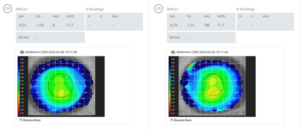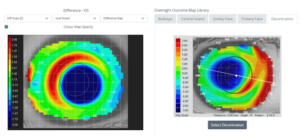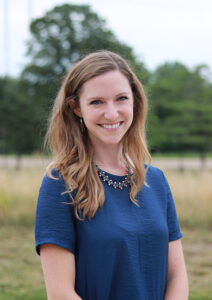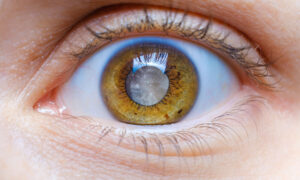sponsored content
May 1, 2024
By Madison Moss, OD, FAAO
Moving to digitized fitting software keeps providers relevant and efficient in the era of technology, and it allows for the best possible patient experience.
Technology in specialty contact lens fitting has been a hot topic for the past several years. With the advent of impression molding, corneoscleral mapping, and higher order aberration control, to name a few, providers now have more fitting resources at their disposal than ever before. Many lens manufacturers are beginning to work with digital design services, which further simplifies and elevates the fitting process.
The KATTCloud Platform
As childhood myopia becomes an epidemic, the standard of care is for practitioners to offer myopia management services to slow its progression.1 The major treatment options available in the United States include atropine eye drops, soft multifocal contact lenses, and orthokeratology lenses. Fitting patients into OrthoK requires several measurements and follow-up care, and the impact on the doctor’s time can be a hindrance to fitting the lenses.2 Without compromising the patient experience, the multi-step fitting process for OrthoK can be made more efficient with technology used to design and order lenses.
This is where the KATTCloud platform comes into the picture. Using acquired patient data and software with advanced precision in design, practitioners may create customized OrthoK lenses for their patients. One benefit of the platform is the ease of use; once topographies have been pulled into the system, the practitioner simply follows guided steps to complete the order process. According to a KATT Design Group press release, the rate of first-fit success is estimated around 90% when using KATTCloud to design the Art Optical Moonlens for OrthoK.3 With that level of accuracy, providers will spend less time ordering lenses and create a better new wearer experience for these young myopes.
A crucial step in any OrthoK fitting process is to gather high quality baseline topography images. Remember that these images will be the basis for all future images; taking the extra time to re-measure a difficult topography is well worth it. Once a patient’s baseline topography images are selected in the topography software, clicking the CloudLink icon, gained after linking the topographer, activates the system and sends the topography images to the dashboard of the KattCloud platform. Another box with a link will then appear, which prompts a username and password for entry to the platform. At this point, the user is ready to design lenses.
Along the way, the KATTCloud guides the user through the process. There is ample space to enter pertinent patient information, and any missing data, such as refraction, will be prompted with an error message. Any further challenges with the system may be managed by contacting the Moonlens consultation team at Art Optical. The “Lab Instructions” section at the bottom of the order page can also be helpful in lens ordering if the patient has any specific needs, or if the provider would like additional communication regarding the order. Another useful tip is to select the box labeled “Request Consultation.” This ensures communication with the consultation team. Any messages from a consultant may be accessed via the “Orders” tab once in the KATTCloud platform, and the history is available for reference at any time.
Since the KATTCloud has only been available in the U.S. since fall 2023, there are some topographers that do not link to the software. However, the KATTCloud can still be beneficial for lens ordering and troubleshooting in these cases. Keratometry, refractive information, and other topography data such as eccentricity and HVID are manually entered, allowing the software to automatically design and adjust lens parameters. The topography images themselves may also be uploaded from other sources for further consultation assistance. Therefore, providers will still have a quick, straightforward option for OrthoK lens ordering and tracking without needing to pick up a phone.

Initial screen on KATTCloud to input refractive data and upload baseline topography images. (click to enlarge)
As the fit progresses in the KATTCloud platform, “Record Outcome” is selected after post-treatment topography images have been uploaded. Here, the practitioner may compare the patient’s latest topography images to examples of topography images that require troubleshooting. For example, if the post-treatment topographies demonstrate lateral decentration, that image is selected. There is also a space to record the remaining uncorrected refractive error. The software will then automatically generate the appropriate changes. In the case of lateral decentration and residual myopia, a lens with a larger diameter, flatter base curve, and slightly increased return cure will be created. Often, there are other details the provider may wish to communicate with the consultant; this information may be entered in the “Lab Instructions” section at the bottom of the order page.

Example of topography image comparison to best match the patient’s topography outcome when troubleshooting an OrthoK fit. (click to enlarge)
This entire process can be completed digitally and with ease. When the topographer speaks to the lens-ordering software, it leaves less busywork for the provider and eliminates additional potential for user error.
The Future is Digital!
Software such as the KATTCloud platform simplifies the fitting process for the practitioner and ensures OrthoK lenses are being fit to the most precise degree. This results in more accurate first-time fits, straightforward troubleshooting, and centralized patient tracking over time. Moving to digitized fitting software keeps providers relevant and efficient in the era of technology, and it allows for the best possible patient experience.
References
- Grzybowski A, Kanclerz P, Tsubota K et al. A review on the epidemiology of myopia in school children worldwide. BMC Ophthalmol. 2020 Jan;20(27).
- Wolffsohn JS, Whayeb Y, Logan NS et al. IMI – Global Trends in Myopia Management Attitudes and Strategies in Clinical Practice – 2022 Update. Invest Ophthalmol Vis Sci. 2023 May;64(6).
- KATT Design Group internal data















